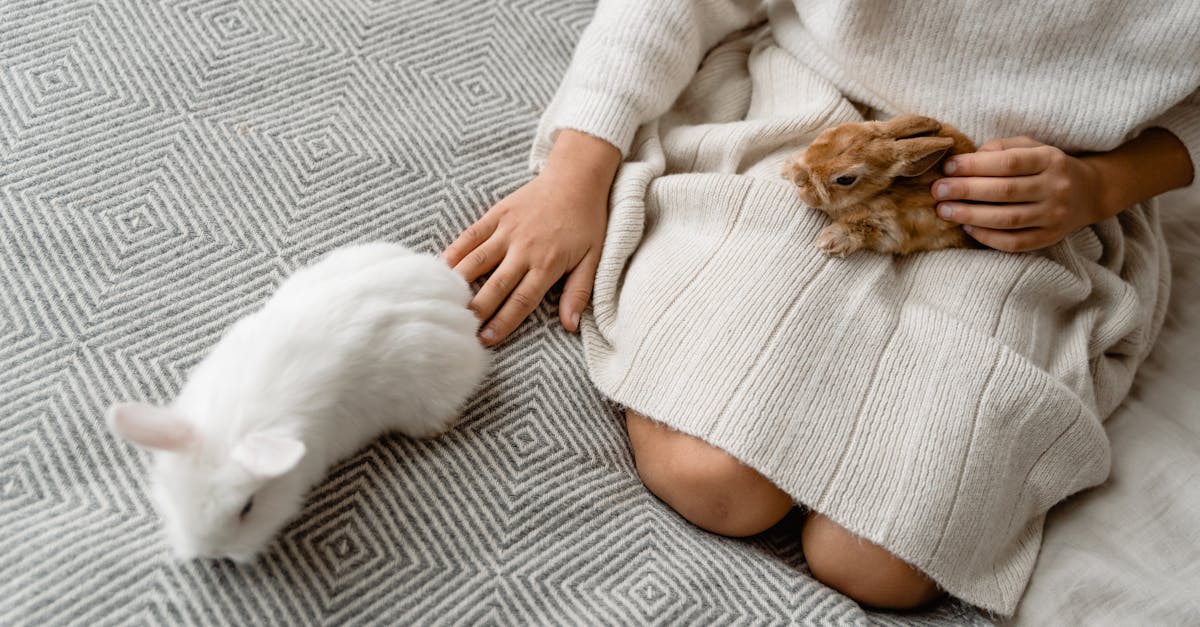Choosing the Perfect Pets for Kids
Introduction
When introducing a pet into a home with children, many parents wonder which animals are best suited for kids. Pets can be a wonderful addition, offering companionship, teaching responsibility, and even helping with emotional development. However, not all pets are equally suitable for the younger members of the family. When considering adding a pet, one must balance the needs of the child with the care requirements of the pet. It's crucial to choose a pet that aligns with the child’s age, maturity level, and interests. In this article, we will explore several child-friendly options aimed at creating harmonious pet-child relationships.
Advertisement
The Lovable Labrador and Other Dogs
Dogs are often touted as man's best friend, and they can undoubtedly be a child's best friend as well. Breeds like the Labrador Retriever, Golden Retriever, and Beagle are known for their gentle nature and adaptability to family life. These breeds are typically patient and can handle the playful energy that children often bring. Additionally, dogs serve as excellent companions, offering unconditional love and support that can be especially beneficial for young children. However, owning a dog means committing to daily walks, regular grooming, and attending to dietary needs, all of which can foster a sense of responsibility in children. It's important to match the dog's energy level with the family’s lifestyle to ensure a happy coexistence.
Advertisement
Cute and Cuddly Cats
For families seeking a pet that requires less maintenance than a dog, cats are an excellent choice. Cats, such as the laid-back British Shorthair or the affectionate Ragdoll, make fantastic companions for children. They are relatively low-maintenance, needing less rigorous exercise than dogs, making them a great option for busy families. Cats help teach children empathy and patience, as many enjoy their independence and may not always be in the mood for cuddling. Furthermore, watching a cat play can be both educational and entertaining for young ones. As with any pet, it's crucial to supervise initial interactions between children and cats to ensure safe and positive experiences.
Advertisement
Hamsters and Other Small Rodents
Small rodents like hamsters, guinea pigs, and mice are among the most popular beginner pets for kids. These small creatures require minimal space and can be housed in a contained environment like a cage or aquarium. They offer children a chance to learn about animal care, such as cleaning their enclosure, feeding, and handling with care. Rodents are typically low-cost pets, making them accessible to many families. However, parents should consider that small rodents are often nocturnal, which means they might be more active at night. Additionally, some rodents have shorter lifespans, which can be a gentle introduction to the concept of life cycles for children.
Advertisement
Fascinating Fish
If your child prefers a pet that doesn’t require direct interaction, fish might be the perfect fit. Fish tanks can be a captivating addition to any home and offer children an educational experience about aquatic life. Both freshwater and saltwater fish can offer unique learning opportunities, although the latter may require more maintenance. Children can learn about ecosystems, proper feeding practices, and the importance of cleanliness in keeping aquatic environments healthy. Setting up and caring for a fish tank can be a family project that encourages patience and regular routine habits. While fish may not offer cuddles, they do provide a beautiful, serene presence that can be calming for children.
Advertisement
Gentle Giant Rabbits
Rabbits can be a delightful choice for children who are ready for an interactive pet experience. Breeds like the Holland Lop and Lionhead Rabbit are known for their friendly and social nature. They provide opportunities for children to learn about grooming, as rabbits need regular brushing, particularly long-haired varieties. Unlike many small rodents, rabbits can live longer, forming lasting bonds with their human companions. Additionally, rabbits can be litter-trained, adding to their appeal as household pets. Children will learn to respect these fragile creatures and the quiet companionship they provide. Families need to prepare adequate space for their rabbits to hop and play safely.
Advertisement
Thoughtful Turtles
For families interested in reptiles, turtles are an excellent starting point. Turtles like the Red-Eared Slider require a specific habitat, which can become a fun, educational project for children. By learning about water quality, basking areas, and proper diet, children gain a comprehensive understanding of pet care. Turtles grow slowly and bond in their unique way, often recognizing their caregivers over time. While they might not be the most interactive of pets, turtles offer a distinct experience, teaching patience and long-term commitment. Investing in a turtle can lead to decades of companionship, with many living beyond the average childhood.
Advertisement
Conclusion
Selecting the right pet for your family is an important decision that should be made with careful consideration. Factors like your child's age, maturity level, and the family's lifestyle should guide your choice. From playful dogs and independent cats to small rodents and serene fish, there are numerous options to suit different needs and preferences. Establishing a bond with a pet can be a profoundly enriching experience for a child, offering lifelong memories, lessons in empathy, and responsibility. With the proper guidance and an appropriate choice, pets can become an invaluable part of growing up, teaching the virtue of loving and caring for another living being.
Advertisement



